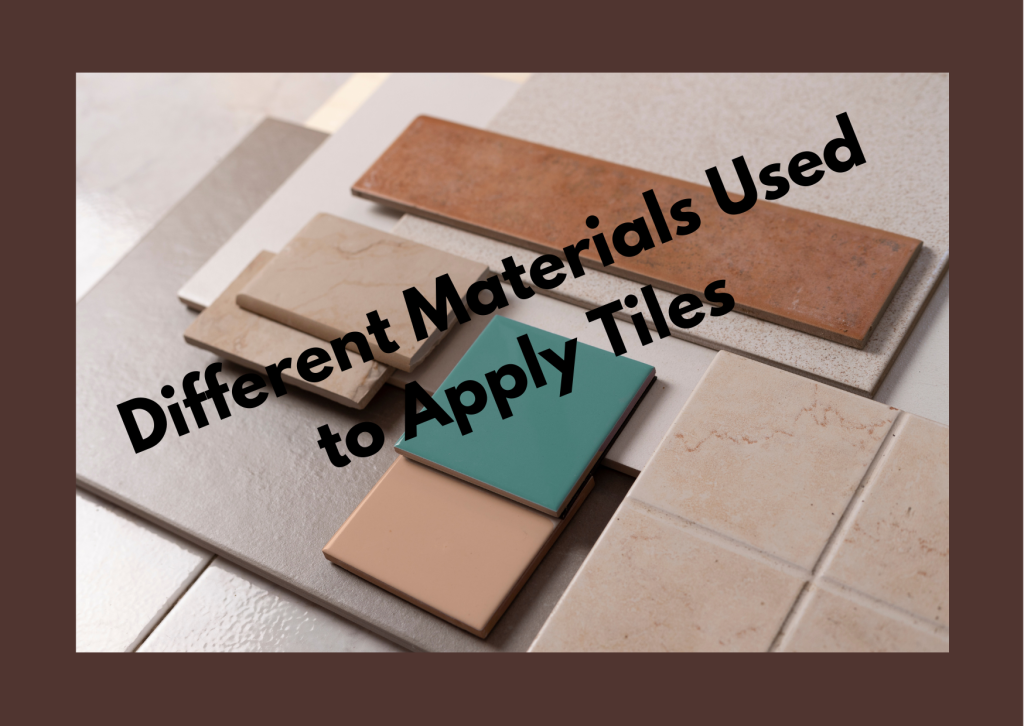Applying tiles requires careful selection of the right materials to ensure durability, stability, and aesthetic appeal. Whether for walls, floors, or outdoor surfaces, the material used in tile installation plays a crucial role in determining longevity and finish. From adhesives to grout and underlayment, choosing the appropriate material used can make a significant difference in the overall outcome. Let’s explore the essential materials required for applying tiles effectively.
1. Tile Adhesives and Mortars
One of the most important material used in tile application is adhesive or mortar. There are different types available, depending on the type of tile and surface:
- Thin-set Mortar: A cement-based adhesive commonly used for floor and wall tiles.
- Epoxy Mortar: A strong, water-resistant option ideal for areas with high moisture exposure.
- Mastic Adhesive: A pre-mixed adhesive best suited for wall tiles in dry areas.
2. Tile Grout for Finishing
Grout is another essential material used to fill the spaces between tiles and ensure a smooth, polished finish. The main types include:
- Cement-Based Grout: Traditional and easy to use, available in sanded and unsanded varieties.
- Epoxy Grout: A durable, stain-resistant option perfect for wet areas.
- Furan Grout: Ideal for industrial settings due to its chemical-resistant properties.
3. Tile Backer Boards
For a strong foundation, a backer board is an essential material used to provide stability and prevent moisture damage. Common types include:
- Cement Backer Board: Best for wet areas like bathrooms and kitchens.
- Foam Backer Board: Lightweight and waterproof, used for easy tile installation.
- Glass Mat Backer Board: A mold-resistant option for high-humidity spaces.
4. Underlayment for Tile Support
The right underlayment is a critical material used beneath tiles to provide support and reduce cracking. Options include:
- Plywood: Suitable for dry areas where additional strength is needed.
- Cement Board: Used in wet areas for enhanced water resistance.
- Uncoupling Membranes: Prevents cracks by allowing slight movement beneath tiles.
5. Waterproofing Membranes
To prevent moisture damage, waterproofing is an essential step. A material used for waterproofing includes:
- Liquid Waterproofing Membranes: Applied with a brush or roller for seamless protection.
- Sheet Membranes: Installed beneath tiles for extra moisture resistance in bathrooms and pools.
6. Tile Spacers for Proper Alignment
Spacers ensure uniform gaps between tiles, allowing grout to settle evenly. These small but essential material used pieces help achieve a professional and balanced finish.
7. Sealers for Tile Protection
Tile sealers are a protective material used to maintain the longevity of tiles and grout. They come in different forms:
- Penetrating Sealers: Absorbed into tiles to prevent stains and moisture damage.
- Topical Sealers: Provide a protective layer over tiles for enhanced durability.
8. Leveling Systems for Even Tile Placement
Tile leveling systems ensure that tiles are evenly positioned, preventing lippage and uneven surfaces. This material used is especially helpful when installing large format tiles.
Conclusion
Choosing the right material used in tile application is crucial for achieving a flawless and long-lasting result. From adhesives and grouts to backer boards and waterproofing membranes, each component contributes to the overall durability and beauty of tiled surfaces. Whether renovating a home or designing a new space, using the right materials will ensure a professional and high-quality finish!
